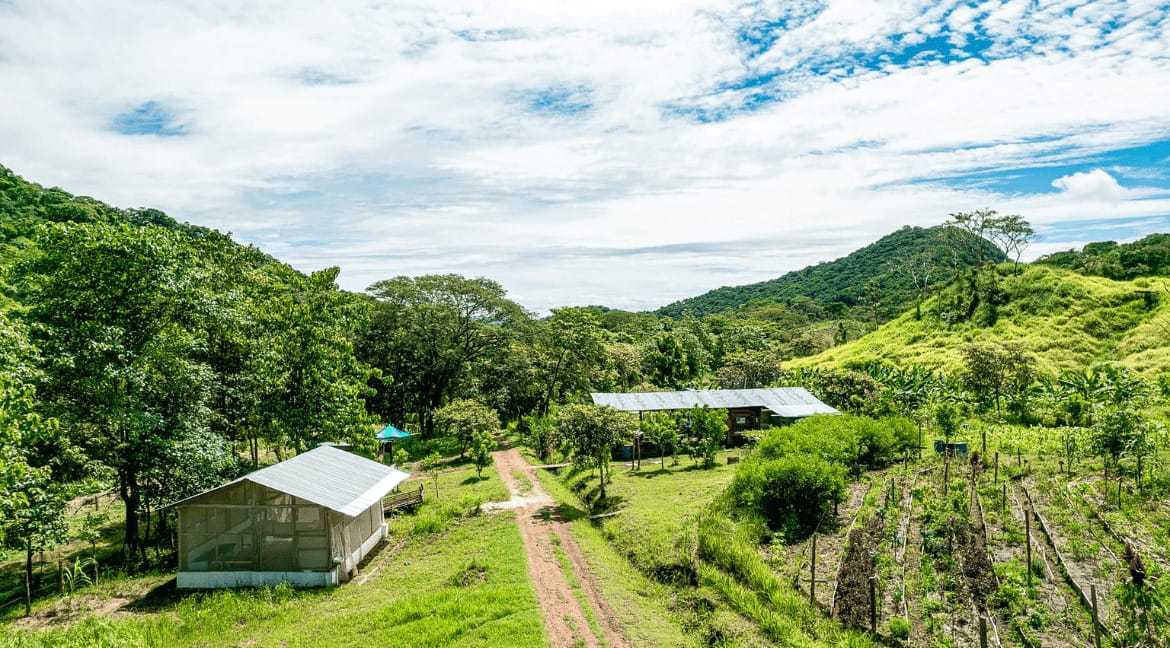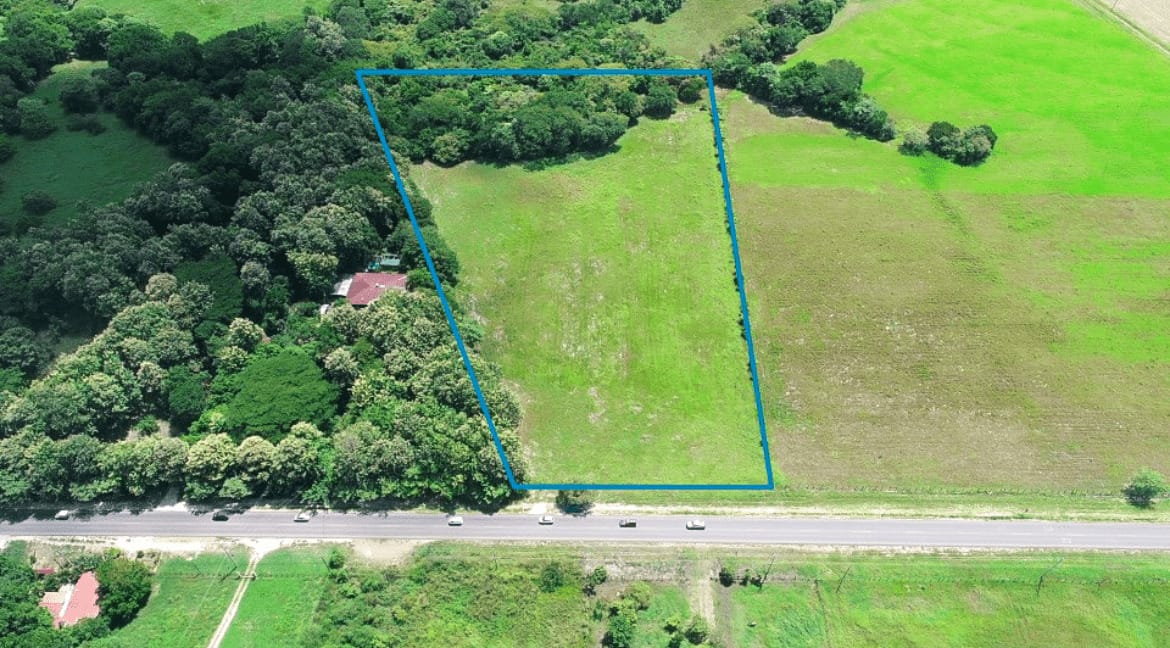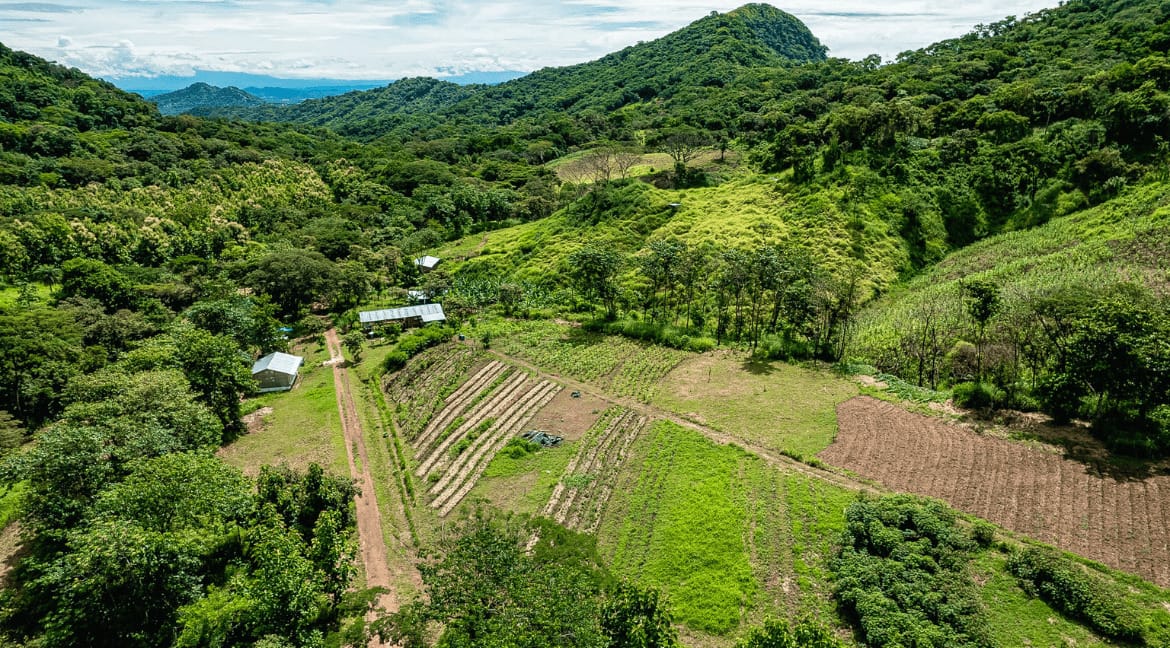When you crave wide, open spaces – whether you’re planning to build a home on a large lot, investing in a specific business, or planning to develop your property – then chances are good that you’ve run across the possibility of agricultural parcels in Costa Rica.
Despite the designation as so-called agricultural land in Costa Rica, these large lots have become a popular choice for construction – even if agriculture isn’t your primary interest. For this reason, many of our clients (and even some of us here at Blue Water Properties) have fallen for the allure, natural beauty, wild settings, and green vistas afforded by parcelas agrícolas.
That said, there are certain advantages and restrictions to this specific type of land purchase. And so, while it’s a compelling option for many, it’s also something you’ll want to explore and understand, well before you sign on the dotted line.
The Basics: What Are Agricultural Parcels in Costa Rica?

Before we get into the details, know that 2020 saw significant updates to the official laws and regulations governing agricultural parcels in Costa Rica.
This means that much of the information available online is outdated. So, if you’ve already read up on the topic, consider where (and when) you got your information. Because the changes are substantial.
As of 2023, agricultural land is defined as land measuring a minimum area of 5,000 square meters (1.24 acres) outside the Greater Metropolitan Area (GAM), encompassing areas like Paraíso, Cartago west to Atenas, Alajuela. Inside the GAM, the minimum area is set at 7,000 square meters (1.73 acres).
Why Choose Agricultural Land?

Not all large lots are classified as agricultural parcels, or parcelas agrícolas. But for those that are, you’ll find that these properties often have a lower price per square meter than smaller lots or non-agricultural parcels. This is a huge advantage, when you’re looking for acreage at a great price.
Note that, given the country’s real estate landscape, it’s much easier to purchase agricultural parcels outside the GAM: Not only is the minimum acreage threshold lower (1.24 acres vs. 1.73 acres), but there’s less population density and larger swaths of open land. In other words, supply is greater and the restrictions are fewer.
It’s a win-win, if you’re looking here in Guanacaste, which is firmly and unquestionably outside the GAM. That means that anywhere in the province – from the quiet coasts of Nosara and Playa Negra north through to developed Tamarindo, Playa Conchal, Playa Flamingo, Playas del Coco, and Papagayo – land can qualify as an agricultural parcel when it measures at least 5,000 square meters.
Notably, agricultural parcels in Costa Rica can serve many purposes beyond agriculture, livestock, and forestry – from personal home construction and businesses to even mixed-use projects. And in fact, that’s exactly why so many purchase agricultural land today.
The Legalities: Laws, Rules & Regulations Governing Agricultural Land

In addition to the general laws surrounding agricultural parcels, it’s crucial to understand that national regulations further segment this land designation into urban and rural categories, with specific regulations for tourism developments.
As mentioned above, in Guanacaste, where Blue Water Properties is located, we fall under the “rural” classification, as we are located outside the Greater Metropolitan Area (GAM). Further classification earmarks some agricultural parcels in our region for tourism, due to their potential for tourism development… but more on that, in a moment.
Historically, agricultural parcels in Costa Rica were subject to a building cap of 10% to 15% of their total area for infrastructure. Translating this to plain language and real numbers: If you owned a 5,000 m2 lot (the current minimum), your maximum allowable construction space was limited to 500 square meters (5,382 square feet).
Note: It’s crucial to understand that Costa Rica calculates square footage differently than many other countries. Here, the square footage includes all roofed structures and infrastructure – for example, open-air carports, terraces, pool decks, pools, yoga platforms, and similar construction projects. This complexity posed challenges for many property owners.
In August/September 2020, Costa Rica’s Institute for Housing and Urbanism (INVU), in collaboration with other governmental entities, introduced new legal regulations for agricultural land. One significant update involved revising the infrastructure percentage, increasing it to 25% for agricultural parcels. This 25% allocation is distributed as follows:
- A single-family home with a maximum area of 300 m2 (3,229 ft2) over one or two floors;
- Additional infrastructure associated with agricultural activities, contributing to the total coverage of 25%; and
- Any easements must have a minimum width of 7.00m.
Furthermore, there are additional prerequisites, including a soil study (uso de suelo) and a water letter – notably, some of our listings are sold with water letters, for just this reason – along with inspections and other authorizations.
Note to Developers: Agricultural parcels also have the potential for subdivision, subject to municipal approval. Subdividing incurs a cost, but it enhances building possibilities. For example, if you subdivide a 10,000 m2 lot into two 5,000 m2 lots, you can construct two homes and additional infrastructure. However, it’s crucial to note that water availability is not guaranteed until you obtain a construction permit from the municipality.
Further Proposals on Agricultural Parcels in Costa Rica

The 2020 updates to Costa Rica’s agricultural land regulations have brought about positive changes, providing a more contemporary perspective on the uses of agricultural parcels.
However, from the standpoint of a builder, investor, or developer, as well as many others in the field, it’s evident that the new regulations have imposed certain restrictions. For instance, while previously a 5,000 m2 lot could support a 500 m2 home (10% infrastructure), the latest regulations limit the construction on the same undeveloped parcel to a maximum of 300 m2.
Recognizing the impact of these restrictions, the Asamblea Legislativa, Costa Rica’s legislative body, has acknowledged the need for legal reforms to the laws governing agricultural parcels in Costa Rica. Among other addendums, current proposals include:
The Residential-Tourism Classification
File 23.200 proposes that property owners who have agricultural parcels may seek a change in land category. The proposal states that, instead of a designation as agricultural land, these parcels could potentially switch to a classification known as uso turístico residencial, a.k.a. tourism-residential use. The approval process for this change is set at 24 months.
This proposed shift would grant additional flexibility in building provisions, with current suggestions encompassing amenities that include pools, cabins, and other recreational infrastructure.
Low-Impact Residential Use
Another factor under consideration involves accommodating low-impact residential construction, aligning with practices already prevalent in our region of Guanacaste.
If approved, agricultural parcels could permit a reasonably increased percentage of construction, ranging from 15% to 20% of the land footprint. This approach aims to safeguard and enhance a parcel’s landscaping, forest cover, and overall natural beauty.
It’s important to note that these specifically designated lots would be used exclusively for residential use and would not extend to commercial or industrial purposes, allowing for the construction of one or more residential structures within the defined footprint.
Thinking About Agricultural Parcels in Costa Rica?

If you’re looking for a building lot, investment property, or development land, the key takeaway regarding agricultural land is that, after nearly two decades of stability, the legal landscape this type of land is undergoing significant changes.
These changes, while promising in many aspects, also hold the potential for even more positive developments in the future. Our advice? Before you consider purchasing agricultural land, it’s absolutely essential to seek guidance from both 1) an expert real estate agent and 2) a Costa Rican attorney well-versed in real estate law.
Why both? To begin, selecting a real estate agent specializing not only in lots but specifically in agricultural parcels ensures access to an updated and fully current understanding of the current rules and regulations specific to the area. This includes insights into current comparable sales to gauge pricing under the latest regulations.
Complementing this, a real estate lawyer provides a crucial layer of expertise, offering a thorough grasp of both existing laws and those in the pipeline. We’re happy to provide recommendations, should you need them.
By engaging both professionals, you can ensure a comprehensive understanding of the intricacies involved in purchasing agricultural parcels in Costa Rica, particularly in “rural” areas like Guanacaste.
Home Construction in Costa Rica: What’s Your Dream?

If you’re down the rabbit hole of your Costa Rica dream home, investment property, or development project, and are thinking, “hey, could I build it?”, then you are in the right place!
Our YouTube series on moving to & living in Costa Rica is a great place to start (more construction in Costa Rica videos there, too!). But please, get in touch.
At Blue Water Properties of Costa Rica, we’re more than a real estate team. We’re bilingual, bicultural, and seriously experienced. We’re sticklers for responding within 24 hours. And we put you first.
We’re also proud to offer some of the best Costa Rica real estate, including spectacular lots, dream homesites, and so much more.


